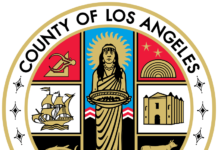Editor’s note: This is the fourth in a series of articles on the history of smuggling on Catalina Island.
As we approach the end of yet another year, we also approach the end of our town’s centennial celebration.
It was in 1913 that the City of Avalon was officially incorporated in the County of Los Angeles. This much you probably already knew or were able to calculate on your own.
Editor’s note: This is the fourth in a series of articles on the history of smuggling on Catalina Island.
As we approach the end of yet another year, we also approach the end of our town’s centennial celebration.
It was in 1913 that the City of Avalon was officially incorporated in the County of Los Angeles. This much you probably already knew or were able to calculate on your own.
But what you probably don’t know is the whole back story to this incorporation and its relationship to the bitter struggles in those days between the pro-liquor crowd and the “dry” crowd.
The short version of this story is that the Banning family, which owned the Island in those days, was intent on keeping Catalina Island an alcohol-free environment. The townspeople who lived here and operated business here, however, saw the income potential in offering cold beers and hot toddies to their clientele.
The best way to get around the Bannings and their prohibition of alcohol was to incorporate as a city and thereby operate the town under the more lenient alcohol laws of the County. Thus, the people of Avalon jumped on the incorporation band wagon.
The Catalina Islander newspaper, which in those days was pro-Banning and therefore anti-alcohol, mocked the idea of this potential for increased revenue. In the first edition of this very paper on January 27, 1914, a front-page editorial chastised “liquor interests” who had “hoodwinked the ‘dry faction’ of the community into the belief that liquor sales will add money to their coffers.”
But any advantages or disadvantages the legalization of alcohol might have brought were rendered moot by two developments. The first was the near destruction of the town in the 1915 Fire, which severely curtailed tourism and brought the town’s economy –with or without alcohol—to its knees.
Then, just as Avalon was beginning to get back on its feet, came the infamous Volstead Act which essentially prohibited the “manufacture, production, use, and sale” of alcohol everywhere around the nation.
I say “infamous” because it wasn’t long before the abolition of alcohol created a crime-wave across the nation, kicking off the decade known as the Roaring ‘20s and giving birth to myriad illegal enterprises, including smuggling.
Like everywhere in the United States, Catalina was greatly affected by this legislation. The Island’s proximity to the thirsty denizens of Los Angeles meant it was a perfect location for smuggling operations. But while the Island was often used as a “stashing” area for smugglers trying to get their goods to the mainland, there’s no indication that the Island was ever a major venue for such operations, at least not compared to the shenanigans occurring on the East Coast.
But local Islanders still wanted to wet their own whistles and the real entertainment was in the lengths that locals would go to keep themselves provisioned.
One life-long Islander, who wished to remain anonymous, told me that teams of pack mules traveling up and down Silver Canyon in the dark of night, saw many a bottle of illicit hooch smuggled into Avalon from the remote beaches of Salta Verde.
Once close to Avalon, the merchandise was transshipped to human carriers and hustled into town. There, the goods were hoisted into the upstairs loft of what is now Zim’s on Catalina Avenue to be parceled out to local customers over time.
Some local folks insisted on making their own liquor. Either they couldn’t afford the imported stuff or they simply had their own preferences (or couldn’t wait for the next mule train to arrive).
Lolo Saldana remembers hearing stories of the Slavic immigrants that lived on Whittley and Marilla in the 1920s and the home-made wine they produced.
“They would put the grapes in their bathtubs,” said Lolo. “Then they’d make the kids take their shoes off and get in the tubs and smash the grapes.”
“Then one day the officials came in and dumped everything down Whittley,” he said.
Wine and the “hard stuff” was made up and down Whittley and Marilla in those days and the odor associated with this business gave the area the name “Vinegar Hill,” a term you still hear from time to time. (My first enterprise on the Island was a youth hostel on Marilla which I briefly considered naming the “Vinegar Hill Hotel”).
After more than a decade of such charades, the Volstead Act and its parent law the 18th Amendment were nullified by the 21st Amendment. Once again alcohol was legalized around the nation.
In 1933, Abe Perluss’ liquor store on Sumner Avenue, known to this day as “Abe’s Liquor,” was the first establishment on the Island to be granted a liquor license after Prohibition.
The inescapable fact that Prohibition had created a maelstrom of crime in America largely put an end to the temperance movements on Catalina and around the nation.
The end of Prohibition also ended the practice of making bathtub wine and gin and closed yet another chapter on smuggling on Catalina Island.
Jim Watson is the author of “Mysterious Island: Catalina,” available at Amazon, Kindle and in stores all over Avalon.









